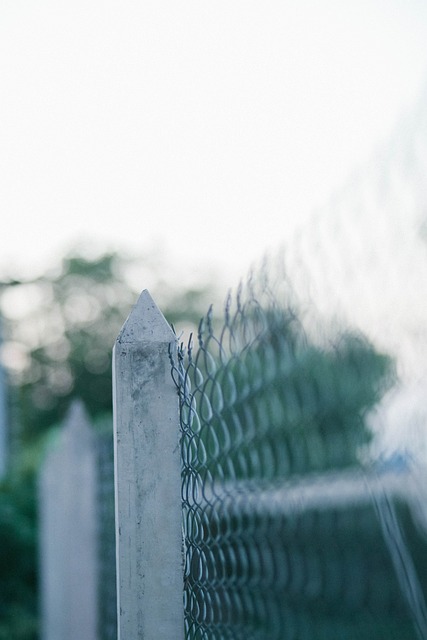Large properties present unique fencing challenges, demanding solutions that balance aesthetics, functionality, and affordability. This article explores cost-effective fencing options tailored to meet the specific needs of expansive spaces. We delve into the pros and cons of traditional fencing versus innovative alternatives, highlighting durable materials and creative design possibilities. Additionally, we provide installation guidance and discuss long-term savings, ensuring environmentally friendly choices enhance your property’s value without breaking the bank.
- Understanding the Needs of Large Properties
- Traditional Fencing vs. Cost-Effective Alternatives
- Durable and Low-Maintenance Materials
- Creative Design Options for Large Spaces
- Installation Tips for Maximum Efficiency
- Long-Term Savings and Environmental Benefits
Understanding the Needs of Large Properties
Large properties present unique challenges when it comes to fencing, as they often require durable and long-lasting solutions that can effectively delineate vast spaces. The primary considerations for such properties extend beyond aesthetic appeal; security, privacy, and practicality are paramount. Homeowners or property managers must evaluate factors like the terrain’s topography, existing vegetation, and potential wildlife presence to select a fencing material and design suited to these specific needs.
Moreover, large-scale projects demand cost-effectiveness without compromising quality. This might involve exploring creative options such as modular fencing systems, which offer both flexibility in installation and potential long-term savings by allowing for future adjustments or expansions. Understanding the interplay between design, functionality, and budget is key to finding suitable fencing solutions for these extensive properties.
Traditional Fencing vs. Cost-Effective Alternatives
Traditional fencing methods, while offering durability and security, can be an expensive prospect for large properties. The extensive materials, labor, and overall cost often deter property owners from installing traditional fences. However, the landscape of fencing solutions has evolved to include cost-effective alternatives that provide both functionality and aesthetics without breaking the bank.
These modern alternatives incorporate innovative designs, high-quality yet affordable materials, and efficient installation techniques. From vinyl and wood composite fences to chain link variations, these options offer durability, low maintenance, and a wide range of styles to suit different property needs. By choosing cost-effective fencing solutions, large property owners can enhance security, privacy, and curb appeal without compromising their financial resources.
Durable and Low-Maintenance Materials
When considering fencing solutions for large properties, opting for durable and low-maintenance materials is a practical choice. Modern fencing options are now designed to withstand harsh weather conditions, resist rot, rust, and pests, ensuring longevity. Materials such as vinyl, aluminum, or even composite decking offer excellent durability without requiring frequent upkeep. Vinyl fences, for instance, are known for their resistance to chipping, fading, and cracking, making them a low-maintenance option. They come in various styles, from traditional picket fences to more contemporary designs, catering to different aesthetic preferences.
Aluminum fencing is another smart choice due to its strength and corrosion-resistant properties, ideal for coastal areas or regions with high moisture levels. Composite materials, made from a mix of wood fibers and plastic, also require little maintenance and offer an eco-friendly alternative to traditional wooden fences. These materials not only save time and money in the long run but also contribute to a more sustainable environment, making them a popular choice for cost-effective fencing solutions on large properties.
Creative Design Options for Large Spaces
When it comes to designing fences for large properties, the options are endless and can be tailored to suit any aesthetic or functional requirement. For expansive landscapes, creative patterns and unique materials can transform a simple boundary into an artful statement. Woven wire fences, for instance, offer both visual appeal and flexibility, allowing for intricate designs that blend seamlessly with natural surroundings. Custom-made metal sculptures or even recycled materials can also be incorporated to create a distinctive look that reflects the owner’s personality.
Moreover, considering the scale of large properties, functional elements like security and privacy should be paramount. Incorporating electric fencing alongside traditional posts and rails not only adds an extra layer of safety but can also enhance the overall design, providing both form and function. These innovative approaches to fencing design ensure that large properties not only look impressive but are also secured effectively.
Installation Tips for Maximum Efficiency
When installing fencing on large properties, maximizing efficiency is key to saving time and money. One tip is to plan your layout beforehand, marking out the exact positions of posts and panels. This ensures a straight and uniform fence line, reducing the need for costly adjustments later. It’s also crucial to prepare the ground properly; removing any obstructions and ensuring a level surface will make post-installation repairs minimal.
Using suitable tools is another efficiency booster. Invest in high-quality equipment like post-hole diggers and electric fences for faster, more precise installations. Consider the terrain as well—for hilly or uneven areas, choose fence styles that can be easily adapted to different heights and angles. Regular breaks during installation allow for strategic planning and rest, ensuring a steady pace without compromising quality.
Long-Term Savings and Environmental Benefits
Investing in fencing for large properties isn’t just about aesthetics; it offers significant long-term savings. High-quality, durable fences require less frequent replacements, reducing costs associated with regular maintenance and repairs. Additionally, they protect against damage caused by wildlife, extreme weather conditions, and other environmental factors, preventing costly fixes and extending the lifespan of your property’s infrastructure.
On an environmental level, fencing can contribute to energy efficiency and conservation. Strategic placement can help reduce heat loss in colder climates or keep hot air out during summers, leading to lower energy bills. Moreover, by containing livestock or pets within a defined area, fences promote responsible land management practices, allowing for better water and soil conservation, and even the cultivation of native plant species.
